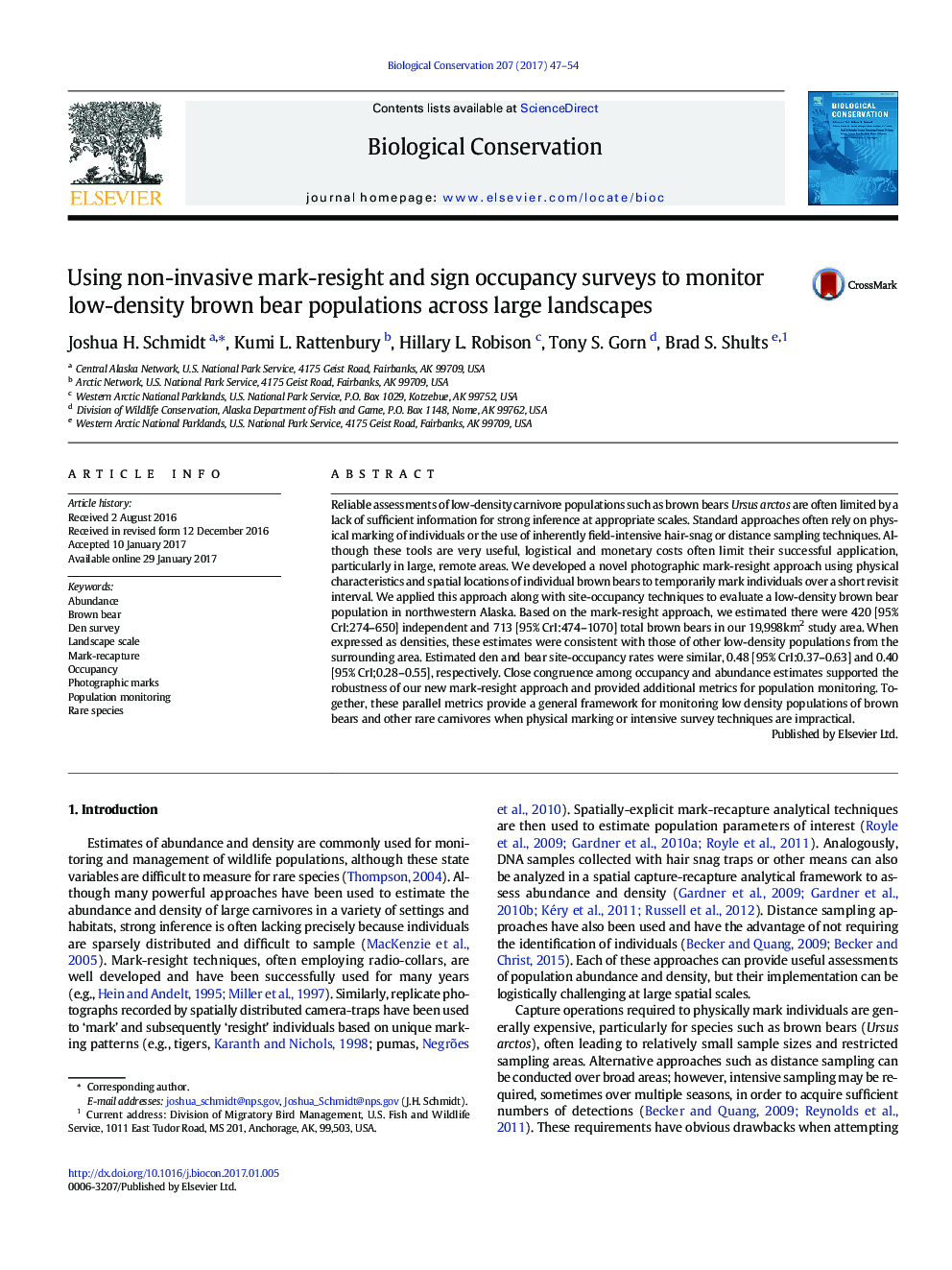| Article ID | Journal | Published Year | Pages | File Type |
|---|---|---|---|---|
| 5743431 | Biological Conservation | 2017 | 8 Pages |
â¢A novel photographic mark-resight survey for brown bears is proposed.â¢Multi-metric site-occupancy surveys can be used to strengthen inference.â¢Mark-resight approach produces inference at the landscape scale for reduced cost.â¢Non-invasive mark-resight can be used to successfully monitor carnivore populations.
Reliable assessments of low-density carnivore populations such as brown bears Ursus arctos are often limited by a lack of sufficient information for strong inference at appropriate scales. Standard approaches often rely on physical marking of individuals or the use of inherently field-intensive hair-snag or distance sampling techniques. Although these tools are very useful, logistical and monetary costs often limit their successful application, particularly in large, remote areas. We developed a novel photographic mark-resight approach using physical characteristics and spatial locations of individual brown bears to temporarily mark individuals over a short revisit interval. We applied this approach along with site-occupancy techniques to evaluate a low-density brown bear population in northwestern Alaska. Based on the mark-resight approach, we estimated there were 420 [95% CrI:274-650] independent and 713 [95% CrI:474-1070] total brown bears in our 19,998km2 study area. When expressed as densities, these estimates were consistent with those of other low-density populations from the surrounding area. Estimated den and bear site-occupancy rates were similar, 0.48 [95% CrI:0.37-0.63] and 0.40 [95% CrI;0.28-0.55], respectively. Close congruence among occupancy and abundance estimates supported the robustness of our new mark-resight approach and provided additional metrics for population monitoring. Together, these parallel metrics provide a general framework for monitoring low density populations of brown bears and other rare carnivores when physical marking or intensive survey techniques are impractical.
